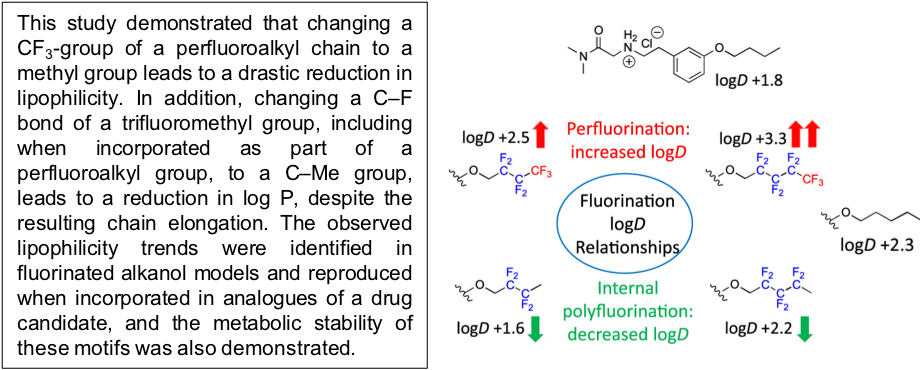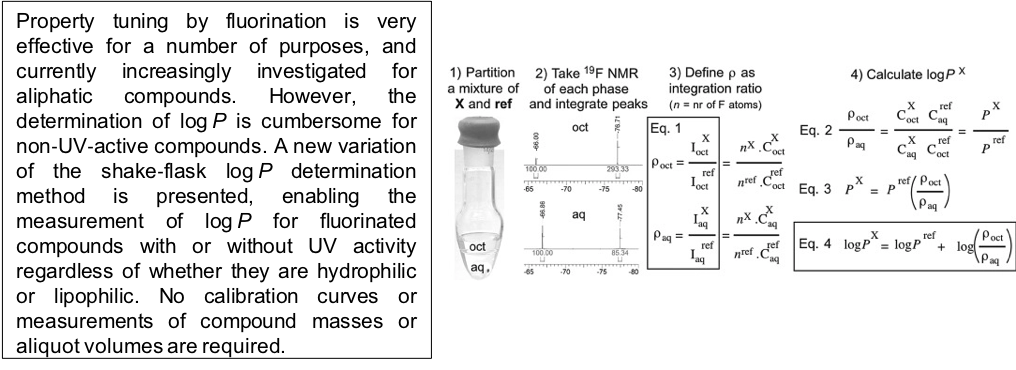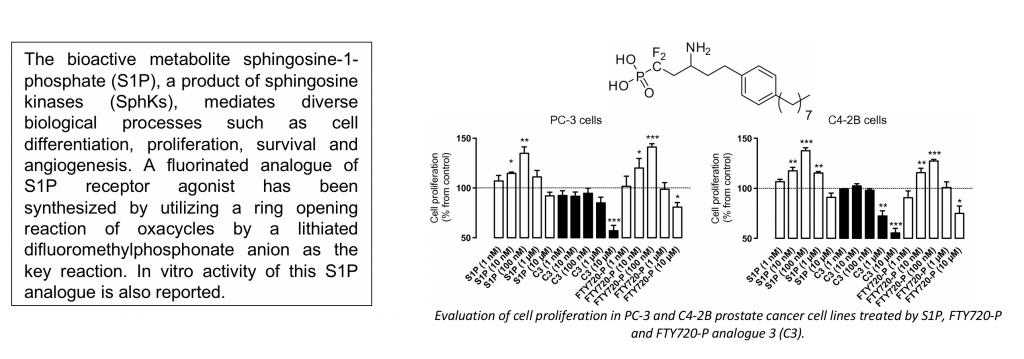The fluorine atom is by far the most electronegative element of the periodic table. Incorporation of fluorine atom(s) in organic molecules leads to a modification of a large range of properties including conformation, acid/base and hydrogen bond properties, lipophilicity, stability against oxidative and hydrolytic degradation. Fluorination of bioactive molecules and of organic materials is extensively used in property optimisation processes. It is estimated that up to 25% of current pharmaceuticals contain at least one fluorine atom, including many blockbusters. The incorporation of an ever-increasing list of fluorinated substitution motifs is an area of extensive current activity. In this respect, reagentless and flow techniques are of great interest.
L’atome de fluor est de loin l’élément le plus électronégatif du tableau périodique. L’incorporation d’atome(s) de fluor dans les molécules organiques entraîne une modification d’un large éventail de propriétés, notamment la conformation, les propriétés de liaison acide/base et de liaison hydrogène, la lipophilie, la stabilité contre la dégradation oxydative et hydrolytique. La fluoration des molécules bioactives et des matières organiques est largement utilisée dans les procédés d’optimisation des propriétés. On estime que jusqu’à 25 % des produits pharmaceutiques actuels contiennent au moins un atome de fluor, y compris de nombreux blockbusters. L’incorporation d’une liste sans cesse croissante de motifs de substitution fluorés est un domaine d’activité actuel très vaste. A cet égard, les techniques propres et en flux sont d’un grand intérêt.
Key Abstracts
Reducing the Lipophilicity of Perfluoroalkyl Groups by CF2–F/CF2–Me or CF3/CH3 Exchange

Investigating the Influence of (Deoxy)fluorination on the Lipophilicity of Non‐UV‐Active Fluorinated Alkanols and Carbohydrates by a New log P Determination Method

Minimising Conformational Bias in Fluoroprolines Through Vicinal Difluorination

Synthesis of fluorinated agonist of sphingosine-1-phosphate receptor 1

Members Involved:






